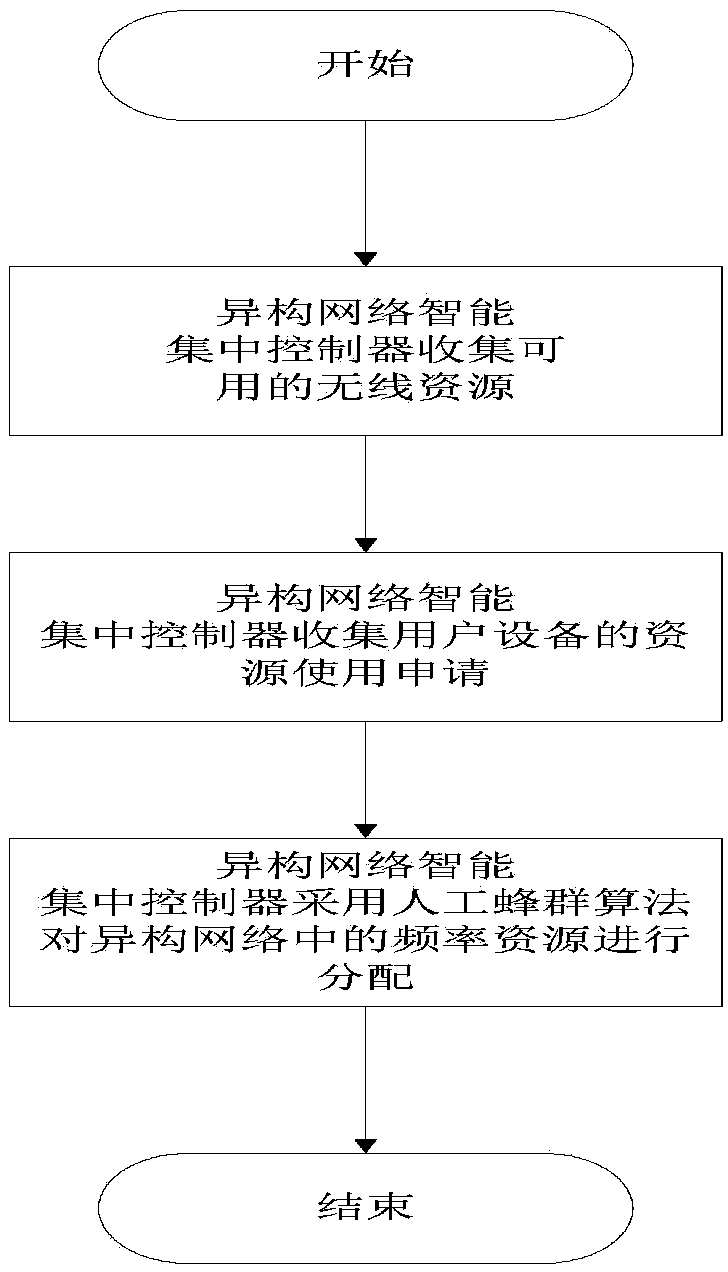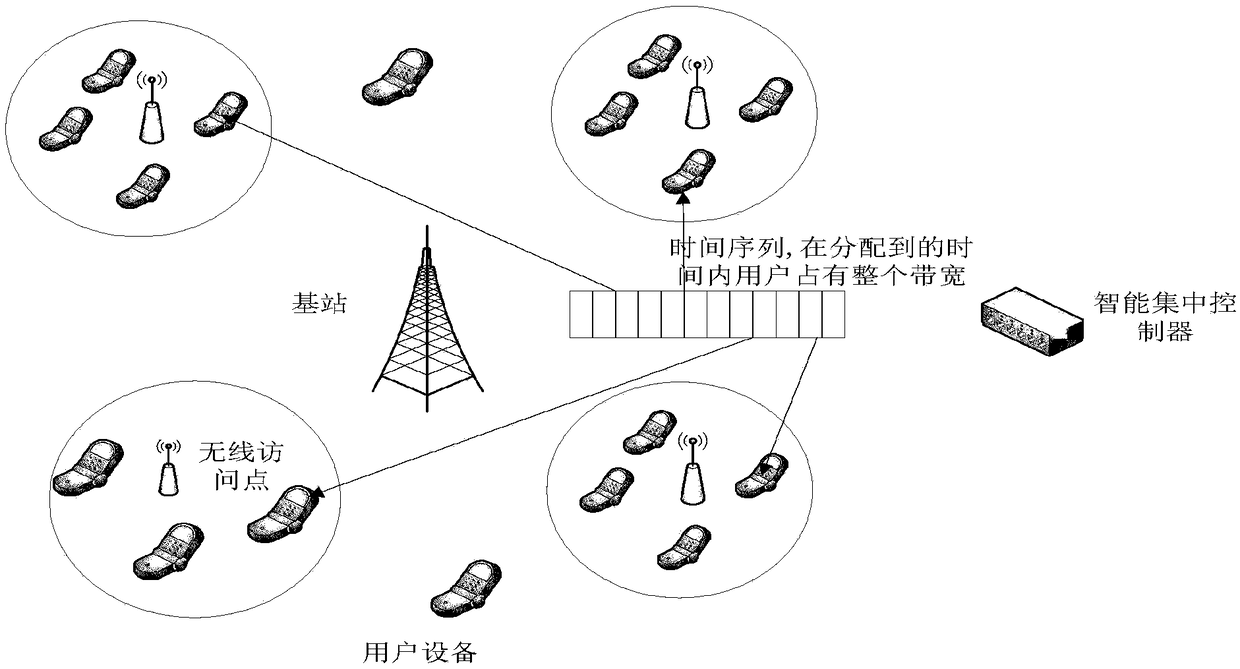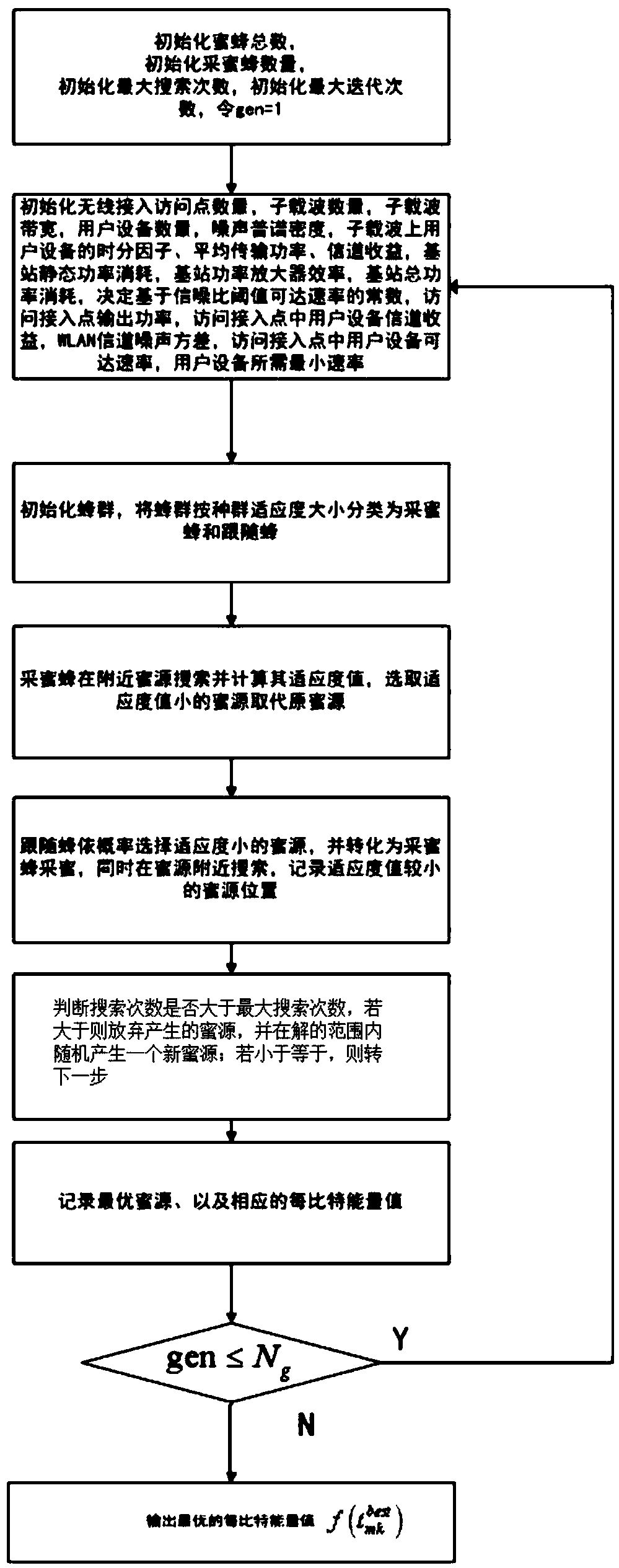Energy-per-bit minimization resource allocation method based on rate limit in heterogeneous network
A heterogeneous network, bit energy technology, applied in the field of computer networks, can solve the problem of not meeting the energy consumption requirements of heterogeneous networks, not considering the energy utilization of heterogeneous networks, etc., to improve energy utilization efficiency and reduce energy consumption. Effect
- Summary
- Abstract
- Description
- Claims
- Application Information
AI Technical Summary
Problems solved by technology
Method used
Image
Examples
Embodiment 1
[0057] Step 1. The intelligent centralized controller in the heterogeneous network collects available wireless resources. In the heterogeneous network, the base station is located in the center of the cell with a service radius of 600m, four access points are located symmetrically at the base station 450m, the total traffic bandwidth of the heterogeneous network is 16MHz, and the subcarrier spacing in the total traffic bandwidth is 15kHz.
[0058] Step 2: The intelligent centralized controller collects resource usage applications of user equipment. The time ratio of the user equipment in the access point is [2,4,3,3], and the minimum rate required by the user equipment is 3.5Mbps. figure 2 It is a schematic diagram of the frequency resource allocation of a heterogeneous network of the present invention.
[0059] Step 3. The intelligent centralized controller uses the artificial bee colony algorithm to allocate frequency resources in the heterogeneous network.
[0060] First, the in...
Embodiment 2
[0067] Step 1. The intelligent centralized controller in the heterogeneous network collects available wireless resources. In the heterogeneous network, the base station is located in the center of the cell with a service radius of 600m, four access points are located symmetrically at the base station 450m, the total traffic bandwidth of the heterogeneous network is 16MHz, and the subcarrier spacing in the total traffic bandwidth is 15kHz.
[0068] Step 2: The intelligent centralized controller collects resource usage applications of user equipment. The time ratio of the user equipment in the access point is [2,4,3,3], and the minimum rate required by the user equipment is 3.5Mbps. figure 2 It is a schematic diagram of the frequency resource allocation of a heterogeneous network of the present invention.
[0069] Step 3. The intelligent centralized controller uses the artificial bee colony algorithm to allocate frequency resources in the heterogeneous network.
[0070] First, the in...
Embodiment 3
[0077] Step 1. The intelligent centralized controller in the heterogeneous network collects available wireless resources. In the heterogeneous network, the base station is located in the center of the cell with a service radius of 600m, four access points are located symmetrically at the base station 450m, the total traffic bandwidth of the heterogeneous network is 16MHz, and the subcarrier spacing in the total traffic bandwidth is 15kHz.
[0078] Step 2: The intelligent centralized controller collects resource usage applications of user equipment. The time ratio of the user equipment in the access point is [2,4,3,3], and the minimum rate required by the user equipment is 3.5Mbps. figure 2 It is a schematic diagram of the frequency resource allocation of a heterogeneous network of the present invention.
[0079] Step 3. The intelligent centralized controller uses the artificial bee colony algorithm to allocate frequency resources in the heterogeneous network.
[0080] First, the in...
PUM
 Login to View More
Login to View More Abstract
Description
Claims
Application Information
 Login to View More
Login to View More - R&D
- Intellectual Property
- Life Sciences
- Materials
- Tech Scout
- Unparalleled Data Quality
- Higher Quality Content
- 60% Fewer Hallucinations
Browse by: Latest US Patents, China's latest patents, Technical Efficacy Thesaurus, Application Domain, Technology Topic, Popular Technical Reports.
© 2025 PatSnap. All rights reserved.Legal|Privacy policy|Modern Slavery Act Transparency Statement|Sitemap|About US| Contact US: help@patsnap.com



